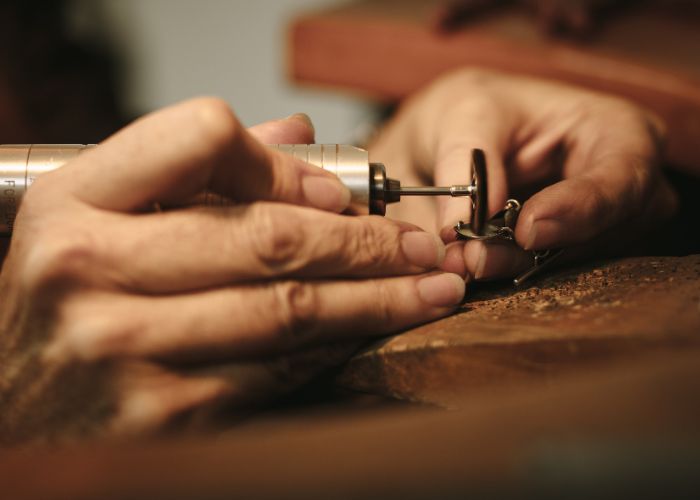Since the birth of civilization, humans have been making and wearing jewelry. But how much do you know about jewelry-making? Below, we discuss four interesting facts about how jewelry is made, like where gold comes from and how jewelry makers mark fine jewelry!
Gold Is Out of This World
Gold is an important metal in the jewelry-making industry, but do you know where it comes from? We’ve heard about mining for gold in mountains and rivers, but gold is not native to Earth, and no naturally occurring processes produce new gold in our world.
The precious metal came to Earth via meteorite billions of years ago! Since gold can only form outside our world via stars, and gold has been found in rocks 4.5 billion years old on Earth, researchers have determined the origin of gold in the Earth’s crust came from a meteor shower billions of years ago. So, that gold in your favorite jewelry piece has been around for billions of years!
Jewelry Makers Use Lasers To Mark Jewels
While jewelry-making is one of civilization’s oldest professions, it’s certainly not behind the times when it comes to innovative technology. Jewelry-making is one of the many industries that use laser marking systems in production, specifically UV laser marking.
If you’ve ever wondered how such fine and delicate jewelry pieces have such precise and impressive markings and carvings, it’s often not the work of a jeweler’s hand but of UV lasers. Since many metals are sensitive to metal tools, UV lasers make marking jewelry much easier by only changing the properties of the surface instead of compromising the piece’s structural integrity.
You Can Mold Gold Using Your Hands
Many know that gold is one of the softer and more malleable metals, but do you know how soft some gold is? While gold is common in jewelry, you’ll rarely find pieces with 24K gold because it’s so soft that the average person could mold its shape with only their hands.
But an interesting fact about how jewelry is made is that if jewelers ever include 24K gold in their pieces, it’s almost always alloyed with other, stronger metals to make the piece more durable.
Lab-Grown Diamonds Are Identical to Natural Ones
We’ve talked at length about the history of jewelry-making, but what does the future hold? If you ask many in the industry, the future of jewelry-making is lab-grown diamonds. Lab-grown diamonds are artificial, so they don’t require any mining.
Despite being made in a lab, lab-grown diamonds feature the same physical, chemical, and optical properties as natural diamonds, so there’s no difference in quality or beauty! While lab-grown diamonds have existed since 1954, they’ve become much more common in recent years, and industry experts expect lab-grown diamonds to become incredibly important to the industry in the coming years.

















